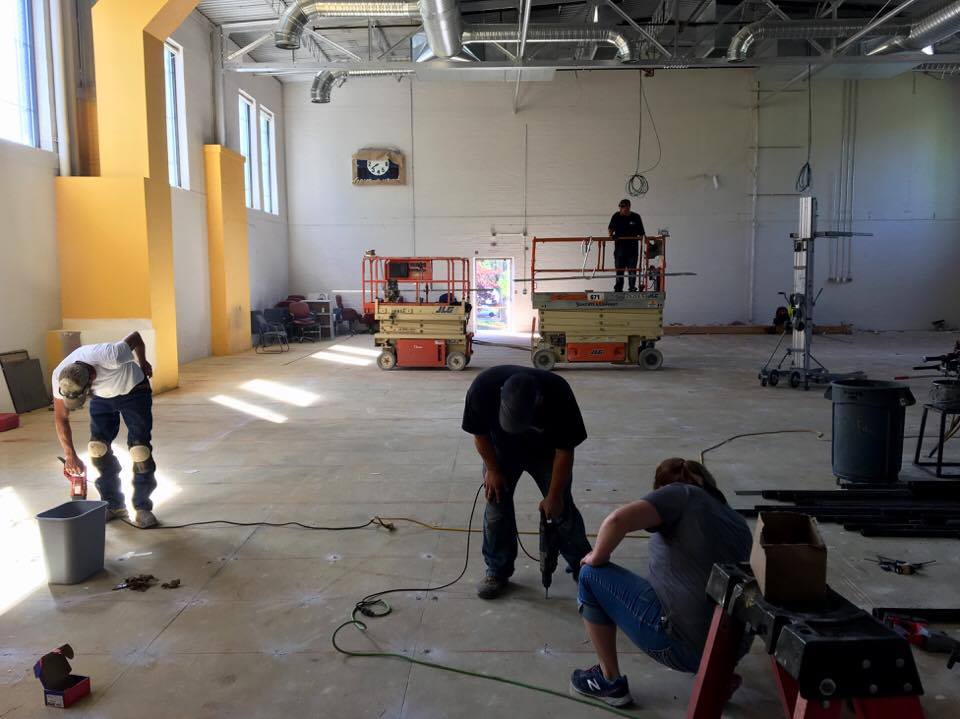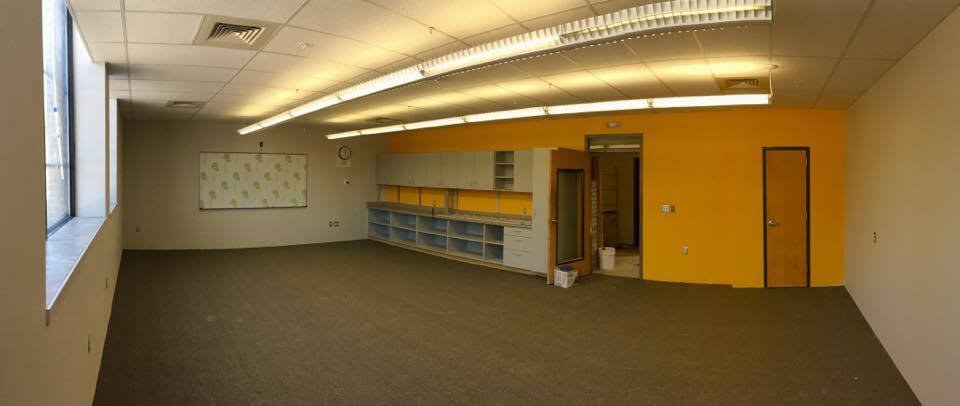IDAHO FALLS — The telltale sounds of a construction site rang through the halls of the O.E. Bell building in downtown Idaho Falls as a handful of workers cobbled the subfloor of what will soon be a gymnasium in the south wing of the historic office building.
“We should have everything done in here by the end of July — at least that’s the plan,” said Tiffany Frasure, vice president of Pro Builders, the Pocatello firm handling the remodel.

A new gym is just one of several rapid-fire renovations now underway to transform O.E. Bell from office space into a new schoolhouse equipped to absorb more than 400 incoming charter school students for 2017-18 school year.
Last year, the City of Idaho Falls granted Alturas International Academy permission to occupy the building. The resulting remodel marks the second time in a century the structure will serve as a school. (Thousands of secondary students attended classes at O.E. Bell from the 1930s to the 1970s, but the building sat vacant for more than a decade before being renovated into office space in the 1990s.)
This most-recent makeover allows Alturas to vacate its current quarters in the old Melaleuca building on the outskirts of town and expand its K-8 enrollment from 270 kids to a targeted 600 in the years to come.
Cofounder and executive director Michelle Ball says O.E. Bell’s new and larger classrooms — now equipped with shiny whiteboards, schoolroom cabinetry and fresh carpets — will also help Alturas fulfill its hallmark approach to learning: group work based on students’ instructional levels, instead of their grade levels.

But the new digs also symbolize something else for Ball — and some of the state’s top charter school advocates, who say the gravitation of charter schools toward Idaho’s typically underserved areas is one way they can curb a current lack of socioeconomic and racial diversity.
“When we were writing the charter for Alturas, one of our top goals was to have a charter school located in an area that would serve the needs of all demographics,” Ball said. “O.E. Bell’s location was an ideal choice, as children in this area could have the opportunity to attend a charter and parents would know this choice was available.”
Many of Idaho’s charter schools currently lack services aimed at helping poor and minority families — including Alturas, which is one of at least 11 other brick-and-morter charters across the state that don’t currently participate in the federal free-and-reduced lunch program. Five charter schools don’t currently provide busing services.
The lack of these services and the prevalence of socioeconomic disparities between Idaho’s charter schools and regular public schools has made way for heated debate over the years.
School-choice advocates say much of the debate stems from state laws prohibiting charters from taxing local patrons via supplemental levies and school bond issues in order to offset certain expenditures, such as busing and the creation and maintenance of lunchroom facilities. The vast majority of Idaho’s regular public schools tap into property taxes to help with both of these expenditures each year.

Charter opponents, meanwhile, argue that these lack of services ultimately enable the schools to enroll a more selective, higher-performing student demographic, with parents who are more likely to pay full price for a school lunch or drive their kids to school.
Bluum CEO and school-choice advocate Terry Ryan recently acknowledged the lack of diversity in Idaho’s charter schools, but echoed Ball’s stance that schools like Alturas are an example of efforts to combat the trend.
“Charters can and should do more, and we are working in our capacity as a funder to make this happen,” Ryan recently told Idaho Education News. “I know Michelle wants to educate a more diverse group of kids.”
Bluum, a Boise nonprofit that supports school innovation and charter schools, has been instrumental in helping Alturas secure occupancy at O.E. Bell.
Recent data from the State Department of Education reveal that Alturas has some ground to cover it if hopes to close its own demographic gap in comparison to the Idaho Falls School District. Last year, Alturas’ Hispanic enrollment was just 6 percent, compared with Idaho Falls’ 18 percent. SDE data show the number of students that qualify for free-and-reduced lunch at below 2 percent, compared with Idaho Falls’ 30 percent.
Ball reiterated that her school’s move across town is a step in the right direction in a larger attempt to close these gaps.
“We want to create a strong community in this area and support the needs of students and their families,” she said. “I believe the vision of this charter will be a strong change for education.”
Alturas plans on moving into O.E. Bell on Aug. 1, with a school start date of Aug. 28.
Disclosure: Bluum and Idaho Education News are both funded by the J.A. and Kathryn Albertson Family Foundation.
